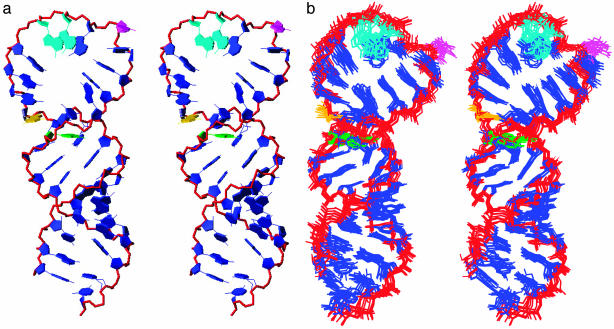Fig. 2.
Structure of the HRV-14 cre. (a) Stereoview of the final averaged structure of the HRV-14 cre, with the loop oriented to the top of the structure. The spirally twisted 14-nt loop is supported by a 10-bp stem containing three G:U base pairs. In nature, this stem is likely to have only nine base pairs because of the absence of G1 (Fig. 1b Center) in the native sequence. The phosphate backbone is shown in red. Residues are shown in blue except for: A15 and A16 (turquoise), which template uridylylation; C18 (magenta), which is looped out, causing a break in the stacking pattern; and G11 (yellow) and A24 (green), the first unpaired residues at the stem-loop junction. (b) Stereoview of the superposition of the final 10 lowest energy structures of the HRV-14 cre. The loop is less well defined than the stem, possibly reflecting greater flexibility of this part of the structure. Colors are as in a.

